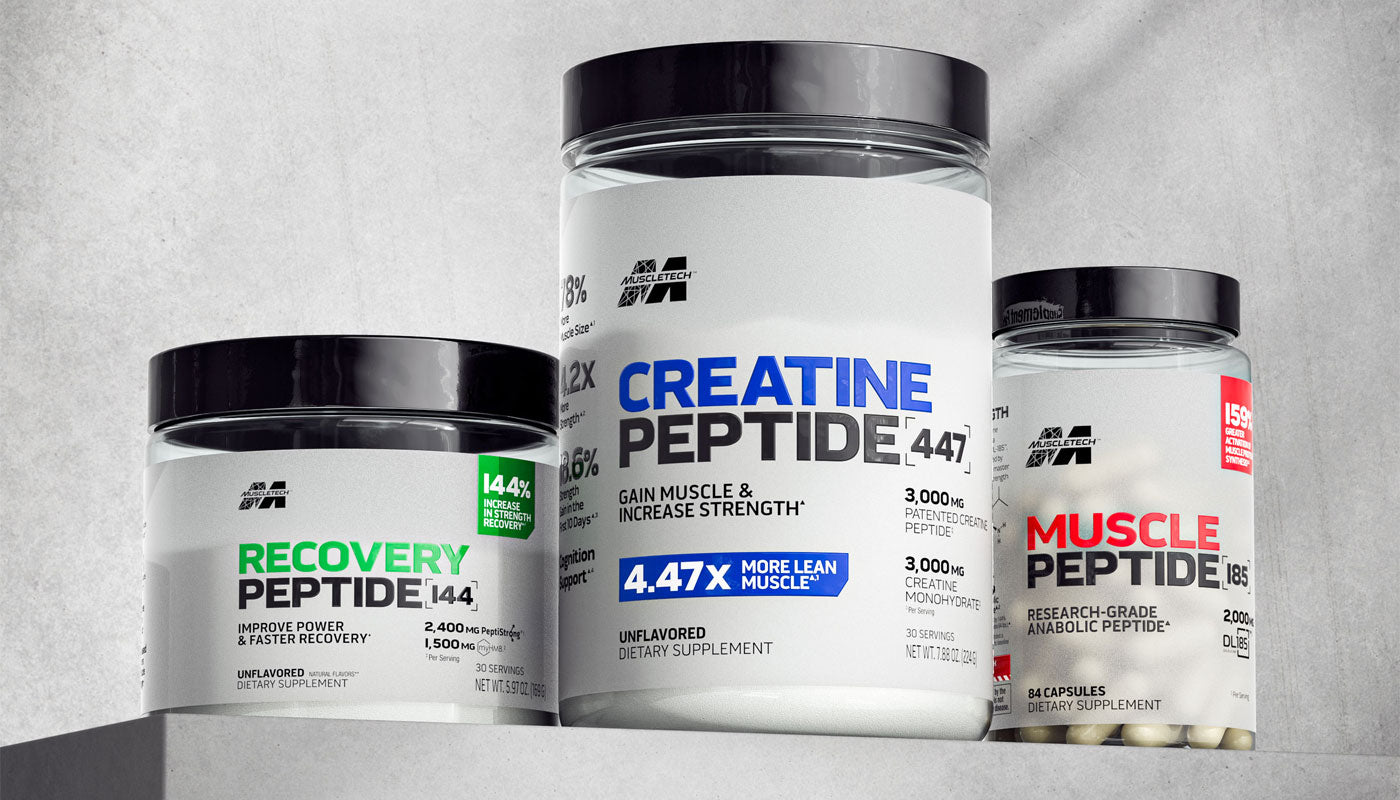Gymgoers swear by protein given its reputation for muscle growth, recovery, and overall health. Whether you’re a seasoned athlete or just getting started on your fitness journey, you’ve probably come across various opinions on protein intake.
With that in mind, one of the most debated questions in the fitness world is: How much protein can the body absorb in one sitting?
Some claim that the body can only handle a limited amount per meal, while others argue that protein absorption isn’t set in stone. With so much conflicting advice, it’s important to break down the science behind protein absorption and utilization to determine what truly matters when it comes to maximizing muscle gains.
In this blog, we’ll take a deep dive into how much protein can the body absorb. By the end, you’ll have a clearer understanding of how much protein your body can handle at once and how to optimize your intake for the best results.
Table of contents
Understanding Protein Absorption vs. Utilization
What Is Protein Absorption?
Protein absorption refers to the process of breaking down dietary protein into amino acids and transporting them into the bloodstream. Once consumed, it goes through a series of digestive processes that allow it to be absorbed and distributed throughout the body.
However, absorption does not necessarily mean the protein will be efficiently used for muscle growth. In cases of “excess” protein, it will be used for other metabolic functions such as muscle recovery.
The small intestine plays a key role in this process. Depending on the type of protein consumed, the protein absorption rate can vary.
For instance, whey protein is rapidly absorbed, making it a great option for post-workout recovery, while casein protein digests more slowly, providing a sustained release of amino acids over several hours.
What Is Protein Utilization?
While absorption ensures that amino acids are available in the body, protein utilization determines how effectively they contribute to muscle repair, enzyme production, and other bodily functions.
Some of the absorbed protein is directed toward muscle protein synthesis (MPS), but excess amino acids can be used for energy, converted into other compounds, or excreted.
The efficiency of protein utilization depends on several factors, including:
Muscle protein synthesis rate (MPS) – Resistance training increases the demand for amino acids, making it more likely that absorbed protein will be used for muscle repair.
Diet composition – The presence of other macronutrients, such as carbohydrates and fats, can influence how effectively protein is used.
Overall protein intake – Spacing protein intake evenly throughout the day may improve muscle protein synthesis instead of consuming it all at once
Age and metabolism – Younger people and those with a higher metabolism tend to utilize protein more efficiently compared to older adults, who may require a higher intake to maintain muscle mass.
By understanding the difference between absorption and utilization, you’ll know how to space out your protein consumption, leading you one step closer to your fitness goals.
The Science of Protein Absorption
How the Body Digests Protein?
When protein is consumed, it goes through a multi-step process to be broken down and absorbed into the bloodstream:
Stomach Digestion – The stomach releases hydrochloric acid (HCl) and the enzyme pepsin to break protein down into smaller chains of amino acids known as peptides.
Small Intestine Digestion – The pancreas secretes digestive enzymes such as trypsin and chymotrypsin to further break peptides into individual amino acids.
Amino Acid Absorption – The amino acids pass through the intestinal walls and enter the bloodstream, where they are transported to tissues for muscle repair, enzyme production, and other physiological functions.
Protein Rate Absorption
It may come as a surprise, but not all types of protein are absorbed equally. To get a better understanding, here’s a look into the protein rate absorption:
Whey Protein – 8-10 grams per hour (fast-digesting)
Casein Protein – 6 grams per hour (slow-digesting)
Egg Protein – 3 grams per hour (moderate-digesting)
When it comes to how much protein can the body absorb, the answer you’ll usually hear is 20-30 grams. While this is the maximum amount that effectively stimulates MPS in one sitting, the body can still absorb and utilize larger amounts of protein for other functions, including immune support and energy production.
Factors Influencing Protein Absorption
Several factors affect protein absorption and utilization:
Protein Source – The structure and composition of the protein influence its digestion rate. Whey protein is quickly digested, while casein works more slowly.
Meal Composition – Consuming protein with fats or fiber can slow digestion, leading to a more prolonged release of amino acids.
Digestive Enzymes – The body’s production of enzymes like pepsin and trypsin plays a role in how effectively protein is broken down.
Individual Differences – Age, gut health, and metabolic rate all contribute to how efficiently protein is processed.
Amino Acid Utilization for Muscle Growth
Once amino acids are available in the bloodstream, they play a crucial role in muscle protein synthesis (MPS). However, just because they are present does not mean they will all be used for muscle growth. Instead, this depends on:
Exercise Stimulus – Resistance training signals the body to use amino acids for muscle repair and growth.
Hormonal Environment – Hormones like insulin, testosterone, and growth hormone regulate muscle protein synthesis.
Protein Timing – While total daily protein intake is the most important factor, distributing protein intake throughout the day helps maintain a steady supply of amino acids for muscle recovery and growth.
How Much Protein Can Your Body Absorb at Once?
“Your body can only absorb 20-30g of protein per meal.”
One of the most persistent myths in nutrition is that the max protein absorption per meal is 20-30 grams. This belief has led many gymgoers to tweak their protein intake, fearing that the excess protein won’t do them much service. However, this is quite far from the truth!
While the max protein absorption per meal may reach 20-30 grams, this doesn’t mean that excess protein is wasted. Instead, the body has multiple pathways to utilize dietary protein, ensuring that the surplus is put to good use.
Muscle Protein Synthesis (MPS) and Digestion
Consuming more than 30 grams of protein in a meal does not necessarily lead to additional MPS. But, that doesn’t mean the body doesn’t use the excess amounts. Protein undergoes digestion and absorption regardless of intake levels, ensuring that amino acids are available for other essential functions beyond muscle growth.
Beyond muscle repair, excess dietary protein can:
Be used for energy via gluconeogenesis.
Contribute to enzyme production, immune function, and neurotransmitter synthesis.
Support connective tissues, skin, and hair health.
Factors That Affect Protein Absorption
How much protein can the body absorb depends on several factors:
1. Age and Metabolism
Older adults may require higher protein intake to combat muscle loss (sarcopenia) and maintain metabolic health. Additionally, metabolism plays a role in how quickly proteins are broken down and utilized.
2. Exercise Level and Muscle Mass
Athletes and individuals who engage in resistance training have higher protein needs and can efficiently utilize more protein for muscle repair and recovery.
3. Protein Source
Different protein sources digest at different rates:
Whey protein is rapidly absorbed, making it ideal post-workout.
Casein protein digests slowly, providing a sustained amino acid release.
Plant-based proteins may take longer to digest and may require a combination for a complete amino acid profile.
4. Meal Composition
The presence of fats and fiber in a meal slows digestion, leading to a more gradual release of amino acids into the bloodstream. This can be beneficial for maintaining steady protein availability over time.
Protein Distribution Throughout the Day
Optimizing protein intake isn’t just about how much you consume but also when you consume it. Instead of loading up on protein in one meal, distributing it throughout the day may be more effective.
Benefits of Spreading Protein Intake
A study found that individuals who distributed their protein intake evenly across meals had greater muscle protein synthesis compared to those who consumed most of their protein at dinner. Some of the benefits you can experience include:
Improved muscle repair and growth by maintaining a steady supply of amino acids.
Enhanced metabolism due to increased thermogenic effect of protein.
Greater satiety and appetite control, helping with weight management.
Role of Slow-Digesting Proteins
While fast-digesting proteins such as why proteins are ideal post-workout, slow-digesting proteins play a crucial role, especially before bedtime. For instance, casein protein provides a sustained release of amino acids overnight, aiding muscle recovery and reducing muscle breakdown while you sleep.
High-Protein Diets and Metabolism
High-protein diets have been linked to increased metabolism and fat loss. Protein has a high thermic effect, meaning the body burns more calories digesting protein compared to carbohydrates or fats. Additionally, high-protein diets help preserve lean muscle mass during weight loss, ensuring that fat—not muscle—is lost.
What Happens to Excess Protein?
So, what happens to the excess protein once the body properly absorbs it?
Contrary to popular belief, excess protein is not automatically stored as fat. Instead, the body has multiple mechanisms to handle it efficiently.
1. Conversion Into Glucose (Gluconeogenesis)
When the body has an excess of protein, some amino acids can be converted into glucose through a process called gluconeogenesis. This occurs primarily when carbohydrate intake is low, helping to maintain blood sugar levels and energy production.
2. Does Excess Protein Lead to Fat Gain?
While it is theoretically possible for excess protein to contribute to fat gain, this is highly unlikely because:
Protein has a high thermic effect (burns more calories during digestion).
It promotes satiety, reducing overall calorie intake.
It is primarily used for muscle repair and other bodily functions before being stored as fat.
A study found that individuals who overconsumed protein did not experience the same level of fat gain as those who overconsumed carbohydrates or fats, suggesting that protein has a protective effect against fat accumulation.
3. Protein and Kidney Strain
A common concern is that consuming too much protein can damage the kidneys. Still, this relates only to those with pre-existing kidney problems. In other words, if you don’t fall under these criteria, high-protein diets do not impair kidney function.
Key Takeaways
Your body can absorb all the protein you eat, but when it comes to muscle growth, it maxes out around 20-30 gr per meal.
Excess protein is used for other metabolic functions and other processes, meaning it isn't wasted.
Fast-digesting protein such as whey protein is ideal for rapid muscle recovery, whereas slow-digesting options like casein protein work best overnight.
Instead of taking protein in one sitting, balance it out for the maximum effect.
Now that you know how much protein can the body absorb, the only thing you need to do is tweak your diet. To stay on top of your progress, you should track your protein intake to see how it benefits your body goals. But even if you go a bit overboard, it won’t go to waste! Finally, ensure the protein supplements you consume are always of high quality such as the MuslceTech Iso Whey.




